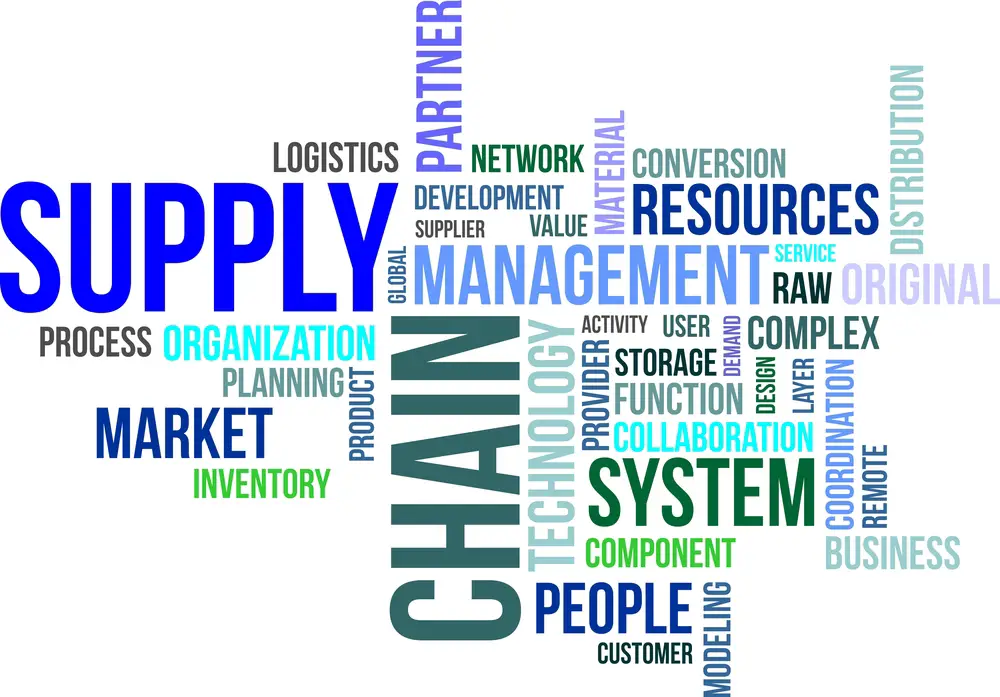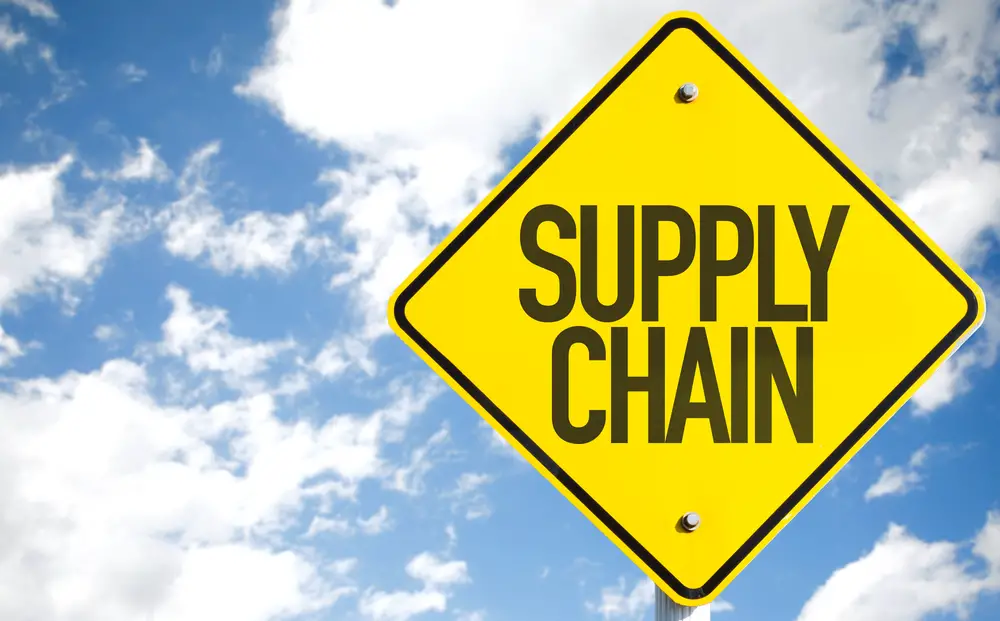The Federal Supply Chain Risk Management Plan (FSCRMP) is a comprehensive program designed to ensure the security and continuity of the federal government’s supply chain operations. It seeks to identify, assess, mitigate, monitor, and respond to risks that could disrupt the supply chain and its operations.
Federal supply chain risk management plan planning and risk management in supply chain management are intended to protect U.S. government organizations from potential threats or disruptions in global supply chains by increasing visibility into the activities of their suppliers and partners.
The federal government gives out instructions to its organizations on how to guide supply chain security and protect their data,, thus growing a resilient federal supply chain part of enterprise risk management.

What Does FSCRMP Do?
The FSCRMP provides a framework for federal agencies to evaluate their existing supply chain risk management practices and identify potential areas of improvement. The FSCRMP requires federal agencies to develop more robust risk management programs considering external and internal risks.
Federal Supply Chain Risk Management Plans (FSCRMP) are designed to help organizations identify and mitigate potential risks in their supply chains. The plans provide a comprehensive overview of current supply chain operations and analyze external factors that could affect the business.
Assess partner capabilities, review internal processes, test scenarios, develop buffers where needed, and create a framework for regularly reviewing and auditing the process. FSCRMPs enables organizations to better prepare for disruptions to minimize operational losses resulting from unforeseen circumstances.
These risks may include cyber security threats, natural disasters, economic volatility, changing customer needs, and technological advances. Additionally, agencies must develop plans for mitigating those risks through monitoring processes and response protocols.
The FSCRMP aims to ensure that all government departments are taking steps to protect their supply chains from disruption or exploitation due to malicious actors or other factors beyond their control.
This includes ensuring that all aspects of any given supply chain are accounted for in terms of monitoring processes, data-sharing protocols, and other safeguards designed to detect any issues with vendors or partners before they become a full-scale problem.
Benefits of FSCRMP
The primary benefit of implementing an effective FSCRMP is that it allows federal agencies to reduce potential risks associated with their supply chains while also improving operational efficiency by providing better visibility into their supplier networks.
An effective FSCRMP can also help reduce costs associated with unexpected shipment delays or other disruptions due to unforeseen events or malicious actors. Furthermore, by proactively addressing potential issues before they arise.
An effective FSCRMP can help prevent costly security breaches or data loss incidents caused by third-party vendors or partners with weak security protocols planning and risk management in supply chain management. Thus creating a resilient supply chain and preventing supply chain disruptions.
Managing supply chain risks is essential for organizations operating at the federal level. By creating a tailored Federal Supply Chain Risk Management Plan, government entities can ensure that their operations remain secure and resilient.
The plan should include risk assessment, identification of potential vulnerabilities, implementation of appropriate risk mitigation strategies, and regular reviews to ensure that policies are up to date. Furthermore, partnerships between public and private stakeholders should be considered to strengthen the overall risk management strategy.
Ultimately, an effective Federal Supply Chain Risk Management Plan sets a foundation for the successful operation of government agencies by helping them identify any possible risks associated with their supply chain processes and develop solutions to mitigate them.

What is Supply Chain Risk Management (SCRM)?
Supply Chain Risk Management (SCRM) is an approach to managing and minimizing the potential risks related to a company’s supply chain. It involves identifying, assessing, and controlling suppliers, distributors, vendors, customers, and other external factors that may affect the organization’s ability to do business.
SCRM employs processes such as vendor risk management and supplier monitoring to identify and manage threats within the supply chain. It also requires organizations to monitor their operations regularly to be aware of any changes or new risks that may arise. SCRM aims to mitigate potential supply chain risks, thereby allowing companies to remain competitive in their respective industries.
Supply Chain Risk Management (SCRM) is a part of your risk management strategy. It is a collection of tools and strategies for managing everyday risks that can negatively impact your company.
If implemented effectively, it will be beneficial to you in creating a competitive advantage. Risk reduction for your supply chain is essential to identify and reduce vulnerabilities as best possible continuously. The more complex the supplier chain is, the more complex the SCRM is.
Main supply chain risks
All supply chains face threats that organizations recognize, but some are unknown. Many of the potential risks for your supply chain can come from external factors. Sometimes, however, the risks in your industry originate in the whole supply chain, as discussed in detail later on.
In an SCRM planning process, you’ll have to know the difference between risk in this category and general uncertainty. A known risk can be quantified, managed, or sometimes completely eliminated. Unknown risk is different and cannot easily be ruled out.
Who needs a Supply Chain Risk Management Plan?
Supply chain risk management plans are necessary for any organization (public or private) that has a complex and critical supply chain network. This includes businesses that operate locally, nationally, and internationally, government entities, and non-governmental organizations.
Effective risk management plans enable organizations to prepare for potential changes in the marketplace, take preventive measures before crises occur, and minimize operational expenses resulting from unforeseen circumstances.
The supply chain does not only affect manufacturers and businesses. Even cloud-based enterprises rely on external suppliers for services, goods, information, or infrastructure. The problem of reducing supplier chain risk overlaps with compliance concerns in some companies.
It covers industries subjected to industry standards and state, federal, and local regulations. If a global supply chain exists, you can incorporate non-profit organizations into the SCRM planning process.
The National Institute of Standards and Technology (NIST) recently released new guidelines to help organizations create and maintain a resilient supply chain and supply chain resiliency. These supply chain requirements address a variety of components such as risk environment, system component integrity, corporate social responsibility, and others.
A resilient supply chain is critical for an organization’s success, as it helps them ensure the security of their goods and services in the face of ever-changing risk environments. Companies must consider all aspects of their supply chain to be prepared for disruptions while meeting their corporate social responsibility goals.
NIST provides companies with the frameworks they need to create a secure yet robust supply chain that can weather any type of change or crisis.
An SCRM plan is vital for any organization that desires to protect its supply chain from potential risks and threats. Creating and implementing such a scrm plan requires an in-depth understanding of those risk areas most likely to affect the company’s operations.
Organizations can reduce the likelihood of disruption or financial loss due to a breach or attack by identifying, monitoring, and managing these points of vulnerability. Additionally, having a comprehensive SCRM plan in place will help ensure that any disruptions are quickly identified and addressed with minimal impact on business operations.

Steps to identify supply chain risks & vulnerabilities
Identifying potential supply chain risks and vulnerabilities is essential to any Federal Supply Chain Risk Management Plan. The following steps can help you create a detailed risk assessment:
1. Analyze the external environment – Develop an understanding of the current macroeconomic, political and legal climate that can affect your organization’s operations.
2. Assess supply chain partners – Establish clear expectations for partners and comprehensive procedures to identify any potential risks related to their services or products.
3. Review internal processes – Evaluate internal processes for areas of improvement where additional controls may be needed to reduce risk exposure.
4. Test scenarios & create buffers – Test different scenarios that could stress the system and create buffering capabilities to mitigate any negative impacts on operations in the event of disruptions.
5. Regular reviews & audits – Implement regular audits and reviews of the supply chain management process to identify new issues or address existing ones quickly and effectively.
The SCRM plan can only be effective if the risk assessment has been thoroughly conducted and identified by the SCRR. Suppliers you do not consider threaten your organization’s safety and performance. If you exclude important external stakeholders in the supply chain, it can be difficult to react immediately.
The agency assists government contractors in examining third-party risks posed by third parties and building the most robust supplier governance systems. Government contract supply chain risks management.
The Chief Financial Officer (CFO) must maintain business operations security. This includes carefully considering physical security measures, key supplier relationships, and acquisition strategies.
Through assessing these elements, CFOs can identify risk factors and improve the resilience of the organization’s operations. Additionally, by monitoring supplier performance and proactively setting acquisition strategies, CFOs can create a secure and reliable supply chain for their business.
A well-structured supply chain strengthens the entire operation as it provides greater flexibility when responding to changes in market conditions or unforeseen circumstances.
Organizations are responsible for managing the security of their critical infrastructure, including key suppliers and information systems. As such, it is essential to establish SCRM controls such as contractual agreements with suppliers and strong security measures for internal processes done in annual assessments.
This ensures that any potential risks from outside or inside threats can be identified and managed quickly. The appropriate security protocols are integral to protecting an organization’s information system’s integrity, allowing it to stay competitive in its respective industries. Proper SCRM controls help organizations safeguard their business operations by ensuring that key suppliers are reliable and trustworthy partners.
Supply chain threats can come from a variety of sources, both internal and external. From natural disasters to malicious cyber attacks, it is important for organizations to be aware of the potential risks in their supply chain.
Financial, legal, and regulatory Compliance are all areas that could be compromised if the proper security measures are not in place. Additionally, firms must assess potential third parties or suppliers they interact with to ensure they are not vulnerable to any potential supply chain threats.
Finally, companies must remain alert to the emerging risk factors of the global markets by investing in technology that can detect anomalies and weaknesses in their supply chain.
Connect with your team
Supply chains are team sports. It is unlikely that anyone has the knowledge or skill to analyze the potential factors or scenarios causing the risks. You’ll require participants from various areas of your organization, including finance, IT, human resources, customer service, and procurement.
All the experts should know the specifics of the supply chain threat they are working towards and be well-prepared. Your team can map an essential product or business service’s value chain and maintain the ongoing review of this data. Remember, your suppliers also work with our team.
Identify Risks
Now your team can list all the supply chain threats—known or not. These can involve direct risks, including disasters, shutdowns by the government, product recalls, and indirect risks, e.g. supplier issues that can affect business processes.
Your supply chain can be segmented using this method. Similarly, IT experts should understand how the current cyber threats impact your business and any vulnerabilities introduced by third parties. In the meantime, communications and human resources personnel should be aware of potential reputation risks.
Quantify Risks
Once you understand the risks, you must prioritize them, depending on their severity. The risk estimation formula above is followed along with the steps necessary for its preparation and application. Risk = Probabilities of the risk happening x Impact.
Complex organizations may require more steps in between or complex scenario plans. An organization with multiple locations can have different risk assessment requirements. Depending on the complexity of the organization, you may need to separate internal suppliers into this process.
All source intelligence is becoming increasingly important in our everyday lives, as its use is seen in various information systems. Properly gathering, analyzing, and utilizing all source intelligence helps ensure that the appropriate level of security is maintained across an organization’s data networks.
Thus, integrating all-source intelligence into an organization’s information system allows it to make more informed decisions and respond quickly to potential threats.
How do you write a supply chain risk management plan?
1. Identification of key suppliers and customers, as well as critical components and products.
2. Analysis of potential risks to the supply chain, such as natural disasters, supplier bankruptcy, shipping accidents.
3. Development of response plans for each type of risk identified.
4. Creation of a communication plan to keep stakeholders updated on risks and responses.
5. Maintenance of up-to-date contact information for all suppliers and customers.

What are the steps in a supply chain risks management process?
1. Establish the risk management policy and objectives.
2. Identify potential risks.
3. Assess the risks.
4. Develop a response plan for each identified risk.
5. Implement the response plans.
6. Monitor and review the risk management process regularly.
Conclusion
The Federal Supply Chain Risk Management Plan provides a comprehensive approach for federal agencies looking to reduce risks associated with their supply chains while improving efficiency simultaneously.
By identifying potential areas of vulnerability within supplier networks and developing plans for mitigating those risks through monitoring processes and response protocols, an effective FSCRMP can help protect government departments from malicious actors while reducing costs associated with unexpected delays in shipments or other disruptions due to unforeseen events.
This plan should be considered as it provides peace of mind when it comes to protecting your business’s digital asset investments using a data-driven approach based on research and analysis techniques.
Have you read?
Strategies for business continuity planning
Enterprise risk management for business owners
Steps of effective operational risk management
Quantitative risk management: concepts, techniques
Importance of enterprise risk management erm

Chris Ekai is a Risk Management expert with over 10 years of experience in the field. He has a Master’s(MSc) degree in Risk Management from University of Portsmouth and is a CPA and Finance professional. He currently works as a Content Manager at Risk Publishing, writing about Enterprise Risk Management, Business Continuity Management and Project Management.

